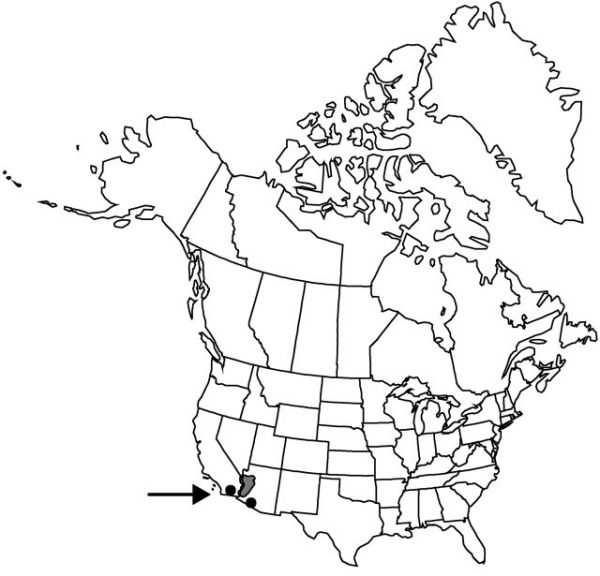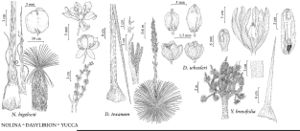Nolina bigelovii
Proc. Amer. Acad. Arts 14: 247. 1879.
Plants caulescent; rosettes from woody, branched caudices and forming small colonies. Stems 10–25 dm. Leaves 34–160 per rosette; blade stiff, linear-lanceolate, firm, 50–150 cm × 12–48 mm, glaucous, scabrous abaxially; bases spoon-shaped, 35–110 mm wide; margins entire, filiferous. Scape 6–24 dm, 15–45 cm diam. Inflorescences compound paniculate, 7–13 dm × 13–70(–110) cm; bracts caducous, 3.5–16 cm; bractlets short-laciniate. Flowers: tepals cream to white, 2–4 mm; fertile stamens: 2–3 mm, anthers to 1 mm; infertile stamens: filaments 0.9–1.4 mm, anthers 0.4–0.6 mm; pedicel erect, proximal to joint 0.5–1 mm, distal to joint 0.5–2 mm. Capsules thin-walled, 8–12 mm × 8–12 mm, notched basally and apically. Seeds grayish, ovoid to oblong, 2.5–3.5 mm.
Phenology: Flowering mid spring.
Habitat: Rocky hillsides and flats of the southern Mojave and Sonoran deserts
Elevation: 300–1500 m
Distribution

Ariz., Calif., Nev., Mexico (Baja California, Sonora).
Discussion
Selected References
None.
